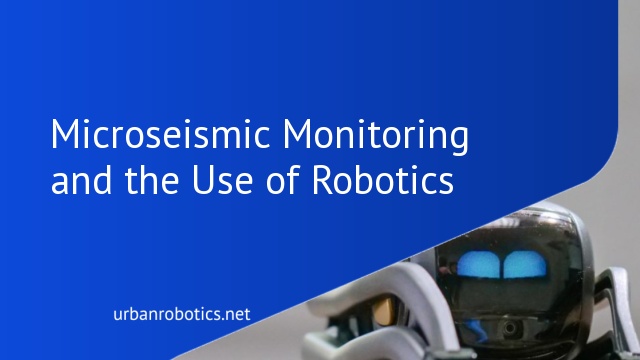The use of robotics in seismic exploration is rapidly growing. The use of Silixa’s DAS microseismic monitoring by drilling rigs has also risen, particularly in the oil and gas exploration markets.
In this post, we’ll discuss how these two technologies are being used together, in what environments and for what purposes. We will also discuss some of the benefits of microseismic monitoring and robotics in seismic exploration.
Microseismic Monitoring
Human and industrial activities such as mining, wastewater injection, geothermal operations, enhanced oil recovery, underground gas storage, and hydraulic fracturing cause small scale earthquakes. Microquakes caused by humans or industrial processes may not be felt on the surface, but they might still pose a risk if located near active faults.
It is possible for even minute strains in the ground caused by humans to destabilize faults and set them off, causing earthquakes to occur. That’s why there is a need for microseismic monitory. Microseismic monitoring technologies have advanced to the point that sensitive equipment such as geophones and accelerometers are used to detect micro-earthquakes nowadays. Robotics can also be used for seismic exploration. Monitoring basic microseismic occurrences tries to address three key concerns concerning them:
- The microseismic event occurred at what point in time?
- The microseismic event occurred in what location?
- Just how big of a deal was the microseismic occurrence really?
Use of Robotics in Seismic Exploration
The use of robotics in seismic exploration is a relatively new concept. Seismic acoustic surveys traditionally use a vessel towing seismic streamers (flexible cables with hydrophones) and one or more sound sources to conduct seismic acoustical investigations. Recent developments are seeing the use of robotics in seismic exploration. Robotics are now being used to perform microseismic monitoring and seismic exploration.
Despite the presence of external environmental disturbances, marine seismic exploration robotics can maintain a more accurate course. As an alternative to traditional towed seismic acquisition methods, self-propelled robot teams equipped with acoustic sensors can transport an acoustic source independently. Also, robots are used as a microseismic monitoring tool for mapping fractures in places where underground gas storage, mining, geothermal operations, wastewater injection and enhanced oil recovery are actively taking place. By using robots and microseismic monitoring technologies, a gas leak or hotspot (a potential fire) can be heard and seen from many kilometres underwater.
Benefits of Microseismic Monitoring
In comparison to traditional rock mass stability monitoring methods, microseismic monitoring allows for more precise localization of unstable rock masses and the early detection of disasters as a result. Technical and managerial employees have ample time in an emergency to execute emergency actions that could save lives, property and staff and ensure the public’s safety if necessary.
Microseismic technology has advanced in monitoring the rock mass’s response to earthquakes. It has unique benefits in the short-term rock mass excavation safety early warning forecast, medium- and long-term disaster classification and stability assessment.
Benefits of Use of Robotics in Seismic Exploration
The use of robots in seismic exploration both on land and underwater has numerous benefits. With a variety of sensors, robots may be used in a wide variety of environments. Unmanned robots are a cost-saving alternative because of their ability to be integrated and even partially replaced with traditional human-crewed vehicles or even humans.
Exploration in harsh areas like the Arctic could be revolutionized by using marine robots to collect seismic data instead of the more traditional streamers. In addition, the use of robots in microseismic monitoring and seismic investigation, notably for oil and gas development, reduces the risk for human operators and keeps them out of dangerous locations.
Microseismic Monitoring and the Use of Robotics
Seismic exploration has witnessed drastic improvements in terms of technology. The use of robots for seismic exploration and microseismic monitoring has been at the forefront of this unprecedented change. These two technologies are being used together and are now being used by drilling rigs in the oil and gas exploration markets due to the numerous benefits they present. Microseismic monitoring helps identify the exact time and location of a microseismic event and how big of a deal the microseismic occurrence was or is.
The use of robots in microseismic monitoring and seismic investigation has presented an excellent opportunity to conduct seismic surveys in treacherous areas such as offshores and areas covered with ice. It is cost-effective and less risky for humans when robots are used for microseismic monitoring and seismic exploration. Also, when robots are used as a microseismic monitoring tool, more accurate results can be achieved even in the face of environmental disturbances.





